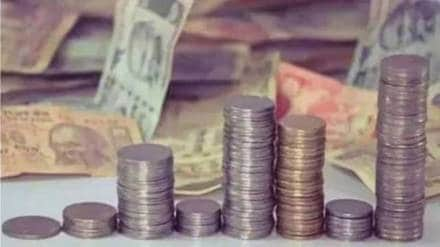By Amol Agrawal,
The World Bank releases an annual thematic report named the World Development Report (WDR). This year’s WDR is based on middle-income (MI) trap. The theme is highly interesting as it opens up the debate on the future of the world economy from a different perspective. The WDR also makes an important reading for India’s policymakers in their drive to make India a developed economy.
First, what is a MI economy? Since 1987, the World Bank has been classifying economies across four income categories: high income (HI), high middle income, low middle income, and low income. In the 35-year period, the number of HI countries doubled from 41 to 86 and that of low-income countries halved from 49 to 26. The number of MI countries (both lower and upper) has increased from 74 to 108. In 2022, HI countries constitute 16% of the world population and 60% of the global gross domestic product (GDP). MI countries housed 75% of the global population and has about 38% of the global GDP. The share of low-income countries in the world population and GDP were 9% and 0.6% respectively.
What is an MI trap? Another World Bank Report released in 2007 (An East Asian Renaissance: Ideas for Economic Growth) showed that middle-income economies undergo systemic slowdowns and remain trapped in their middle-income status. Specifically, the trap occurs when a country reaches about 11% of the GDP per capita of the US. The WDR shows only 34 economies have succeeded in shifting from the middle-income to high-income category in the last 35 years. Since 1970, the mean income per capita of middle-income countries has never risen above one-tenth of the US’. This systemic slowdown of economic growth is the MI trap.
Why do countries remain in the MI trap? After all, we now know what it takes to shape a developed economy: a solid macroeconomic foundation inviting both domestic and foreign investment, supported by strong institutions and clean governance. Economic research shows that in the low-income stages, countries can develop by simply channelling savings towards investment. As they reach middle income, diminishing returns from investments set in and they are unable to grow any further. Economic research has cited multiple factors for the trap with different countries showing different combinations of the factors: volatile economic growth, slowing productivity, undervalued exchange rates, less technology-intensive exports, weakening institutions, etc.
What is the solution to escape the MI trap? After all, all middle-income economies have the ambition to enter the high-income club. The WDR has a nice phrase to sum up the ambition: To get rich is glorious. However, the road ahead is tricky as the world economy faces multiple challenges: slowing growth, ageing population, rising debt, intensifying geopolitics, and trade tensions. Yet MI countries are relying on old policies of expanding investment. You can’t drive a car looking at a rear-view mirror. At current trends, it will take China more than 10 years and Indonesia 70 years just to reach one-quarter of the US income per capita.
The WDR identifies three drivers of growth in the new playbook: investment, infusion, and innovation, or the three Is. Middle-income economies have to undergo two transitions. First, primarily lower-middle-income countries should complement investment with infusion where focus is on imitating and diffusing modern technologies. Second, innovation is added to the investment and infusion mix, so that now the upper-middle-income countries become modern innovators themselves and join the high-income club.
Japan and Korea are excellent examples of the two transitions where their domestic firms initially licensed technologies from leaders before becoming tech leaders themselves. The WDR also discusses Eastern European economies like Estonia which managed the transition swiftly, Poland steadily, and Bulgaria slowly.
What lessons can be drawn for India? India transitioned from a low-income economy to low-middle-income economy in 2007. In 2022, India’s per capita income was $2,400 which is around 3.1% of the US per capita income ($76,590). The evidence suggests MI trap starts at around 11% of the US GDP, so there is both high potential but also a long journey to becoming a high-income country. There is tremendous potential for all the three Is to develop in India. However, there is no policy document on the path towards becoming a developed nation. The WDR is a sobering pointer on the need to be both humble and nimble, else it will take nearly 75 years for India to reach even one quarter of the US GDP.
In a way, the WDR is not saying anything new. Adam Smith, in The Wealth of Nations, made similar points albeit in a different jargon. However, economic history shows that transitions are neither linear nor smooth. Marx had argued that these transitions will be embroiled with class conflicts leading to crises. However, it was Schumpeter who showed that creative destruction in capitalism led to both crises and restoration. The WDR, based on Schumpeterian economics, wishes to make the expression “middle-income trap” completely obsolete. Over to the policymakers for distilling lessons from the WDR and acting on them.
The author teaches at Ahmedabad University
Disclaimer: Views expressed are personal and do not reflect the official position or policy of Financial Express Online. Reproducing this content without permission is prohibited.
